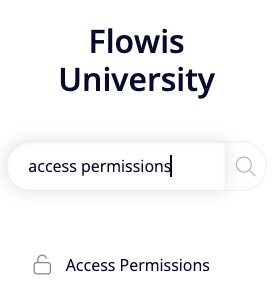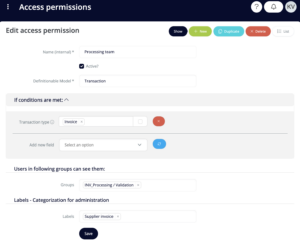
Access permissions allow you to see that a transaction or definition records exist. That means, if you click “Transactions” in the left menu, you will not see any transaction in the list if you do not have any Access Permissions set up. Once you set up Access Permissions correctly, you can see existing Transactions in the list and click on them. The same applies to Definitions in your Custom Tabs – you can see the records only if any of the Access Permissions allow you to.
What needs to be set up for this to work?
Name (internal) – mandatory, just an internal name that will make the administration of all Access Permissions readable for the other administrators
Active? – if not checked, the Access Permissions will not be applied
Definitionable model – mandatory, choose among the options – if you are setting up the permissions for the Transactions, or for the records of any of the Definitions
If conditions are met – which conditions have to be met for these Permissions to work
Users in the following groups can see them – which Groups can access given Transactions/Definitions once the above-mentioned conditions are met. If no Group is selected, all of the groups will be given the Permission
By combining correct conditions and Groups (the last two parts of the setup), you can guarantee every Group of Users can access only the Transactions they are allowed to see. For example, you can set up one Access Permissions for top management to access any Transaction in the system, second Access Permissions for accountants to access only invoice transactions, etc.

What can you see after clicking on a Transaction? That needs to be set up in Show Permissions. Learn about them in our next article.